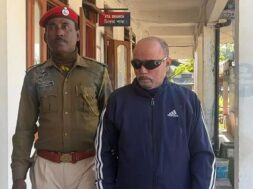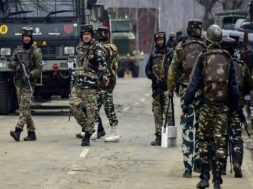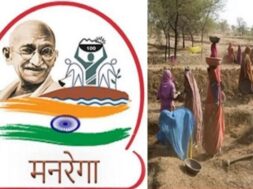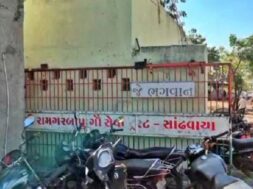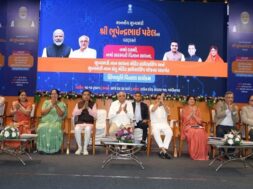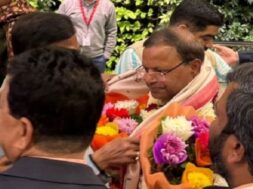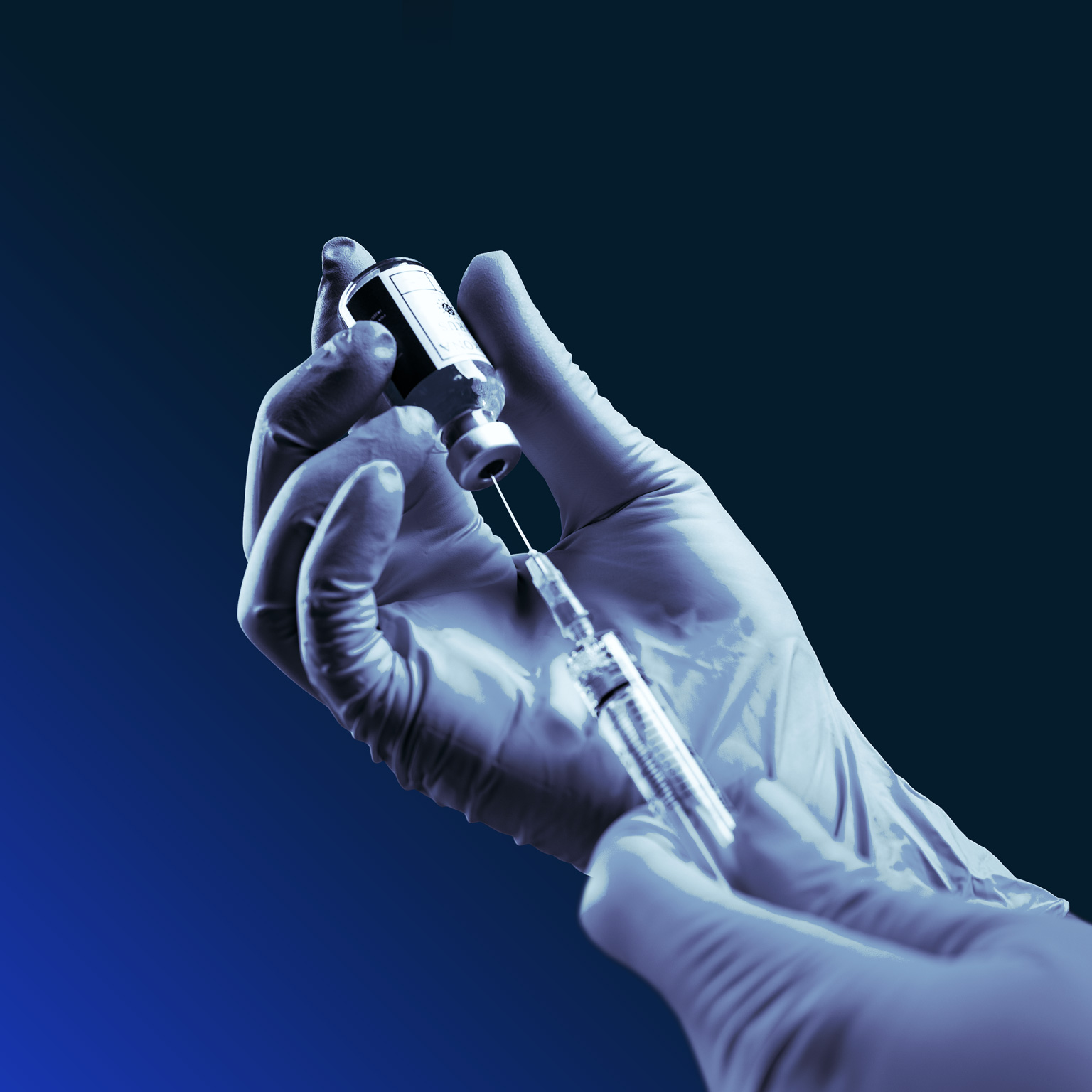
Manas Dasgupta
NEW DELHI, Apr 10: Just as the All India Institute of Medical Sciences director Randeep Guleria blamed the lack of foresight of the Serum Institute of India in ramping up Covid-19 vaccine production in time, it was also no “rocket science” for the central government to realize that the drive for large-scale vaccination beyond the country’s capacity to produce was bound to create vaccine shortage at some stage.
The centre, however, instead of admitting its own miscalculations preferred to put the blame on the non-BJP ruled states for creating the “vaccine shortage panic” to “cover their own mishandling of the situation” to curb the spike in the Coronavirus cases in their respective states and the country.
Predicting the global clamour for coronavirus vaccines – even as early as six months ago, when several candidates were still in late-stage clinical trials – could not have been “rocket science”, Guleria said on Saturday responding to the Serum Institute of India CEO Adar Poonawalla’s admission that his company’s existing Corona vaccine production facility was “very stressed” and would need about Rs 3,000 crores immediate assistance from the centre to increase its production.
Leading the central charge against the states, particularly Maharashtra, Chhattisgarh and Punjab, all the three ruled by the non-BJP parties, two of them by the Congress, were the union health minister Harsh Vardhan and the information minister Prakash Javadekar.
Several media houses collecting facts and figures from various sources point out that most of the figures quoted by the central ministers to blame the states were non-existent. An analysis of available data suggests that while India is administering 34-35 lakh doses of Covishield and Covaxin daily, as figures released by the union health ministry showed, the country’s daily production capacity of the two vaccines together was no more than 26 lakh doses at present, and was actually producing only about 23 lakh doses per day. And this is when SII is prioritising India’s needs over its global obligations, as a stopgap measure.
As India continues to grapple with a second, more potent wave of coronavirus pandemic, registering 1.45 lakh cases on Saturday, again a new record, the country’s vaccination plan hit another roadblock as besides Maharashtra, five more states including Rajasthan, Punjab, Chhattisgarh, Andhra Pradesh and Odisha joined the chorus complaining of acute shortage of vaccine doses within this week.
The Centre, however, has firmly denied the claim insisting that there was no shortage of vaccines.
Union Health Minister Harsh Vardhan said the complaints, mostly from non-BJP ruled states, were attempts to “cover up” their failures and spread panic.
“Vaccine supplies are being monitored on a real-time basis, and state governments are being apprised regularly about it,” Vardhan said in a statement. “Allegations of vaccine shortage are utterly baseless,” he added.
The Union minister’s statement not only drew sharp reactions from netizens on Twitter, but also stood in stark contrast with the reports from various state and national news media.
According to the Maharashtra health minister Rajesh Tope, the state’s stock of 15.76 lakh doses of Covaxin and Covishield will be exhausted in three days. Health authorities have said they may be forced to halt vaccination for four to five days next week if the new stock does not come.
As per the latest reports, vaccination was halted in several parts of Maharashtra, including Pune, Panvel and Satara, due to a “shortage” in vaccine supply while 23 of the 26 Mumbai vaccination centres that have already been brought to a grinding halt due to a shortage of jabs are in Navi Mumbai alone. The state has now asked for a minimum 40 lakh doses to meet the daily target of 4.5 lakh vaccinations. Tope said while Maharashtra received 7.5 lakh doses on Thursday, Uttar Pradesh was given 48 lakh doses, Madhya Pradesh 40 lakh, Gujarat 30 lakh and Haryana 24 lakh doses.
“Why is Maharashtra, which is leading the vaccination drive and has the highest number of active cases, getting only 7.5 lakh doses?” he asked.
Likewise, the state of Jharkhand also said it was left with just enough to sustain the inoculation drive for one to two days. Andhra Pradesh said it was due to receive fresh supply of vaccine on April 2 but are still to receive the stock and he centre has informed the state the stock could be released only after April 15.
Odisha is another state that has been reporting severe shortages, with at least 50 percent vaccination centres running dry. “Due to shortage of vaccine, we have to close nearly 700 vaccination centres in the state (out of over 1,400 functional sites). Only 755 could be made active today,” Health and Family Welfare Minister NK Das said in a letter to Union Health and Family Welfare Minister Harsh Vardhan.
Even though the government has officially maintained that there was no shortage of vaccine shots in the country, a look at the recent inoculation numbers raises questions on India’s capacity to keep up with the inflow of vaccine seekers as early inhibitions against the vaccines drop.
As of today, India has been administering more than 34 lakh vaccine doses per day. However, the production capacity of India’s two vaccine manufacturers indicates a clear shortfall.
The Serum Institute of India, which is the primary provider of India’s vaccine requirements, is currently producing 21 lakh doses per day, its CEO Adar Poonawalla told the media while insisting that his company’s production capacity was “very stressed”.
“The globe needs this vaccine… we are prioritising the needs of India (but) we are still short of being able to supply to every Indian,” Poonawalla said.
He said SII needed Rs 3,000 crore, a shortfall linked to the deal with the government to sell doses at a heavy discount, in order to ramp up capacity needed to scale up production by June.
Poonawalla said SII was prioritising the temporarily needs of India before others. However, the company is a private player and has international obligations as well.
On the other hand, indigenously developed, Bharat Biotech’s COVAXIN constitutes less than 50 lakh or 10 percent vaccine doses being administered in India at present. Bharat Biotech’s annual production capacity is 15 crore doses, meaning it cannot produce more than 4.5 lakh doses in a day and actually its current daily production was a mere 1.6 lakh doses.
Under the terms of agreements with UK’s AstraZenca, the SII being a private player has global obligations as well. India’s daily inoculation count will also need to go up beyond 35 lakh odd daily doses if India wants to improve herd immunity to curtail the spread of the pandemic.
To demands of opening up vaccination for all, the government says vaccination will not yet be extended to wider groups because of a “limited supply” until July.
Some senior government officials admit that there was an overall shortage in vaccine supply and the Centre had not estimated the daily consumption to rise so fast. In addition to the production shortfall, the opposition parties have also been questioning the government’s “vaccine diplomacy” initiative under which India has supplied free doses to friendly countries and has also made commercial sales of vaccines produced locally.
Till March 21, India had sent 6 crore vaccine doses to 76 countries and used 4.5 crore domestically. However, in the 18 days since, the country’s immunisation count has touched 9.4 crore.
Media reports have also countered the central government’s charges of “vaccine wastage” by the non-BJP ruled states. Harsh Vardhan had particularly blamed Maharashtra for “wasting” huge amount of vaccine doses due to its “lack of planning in vaccine transportation” within the state. But the figures collected from the official sources show vaccine wastage to be the minimal in Maharashtra.
According to reports, the highest vaccine wastage was in Telangana at 17.5 percent, followed by Andhra Pradesh – 11.5 percent, Uttar Pradesh – 9.4 percent, Karnataka – 6.9 percent, J&K – 6.5 percent, Rajasthan – 5.6 percent, Assam – 5.5 percent, Gujarat – 5.3 percent, West Bengal – 4.1 percent and Maharashtra – 3.2 percent. This was against the national average of vaccine wastage of six percent even though the centre urging the states to keep the wastage at below one per cent.


